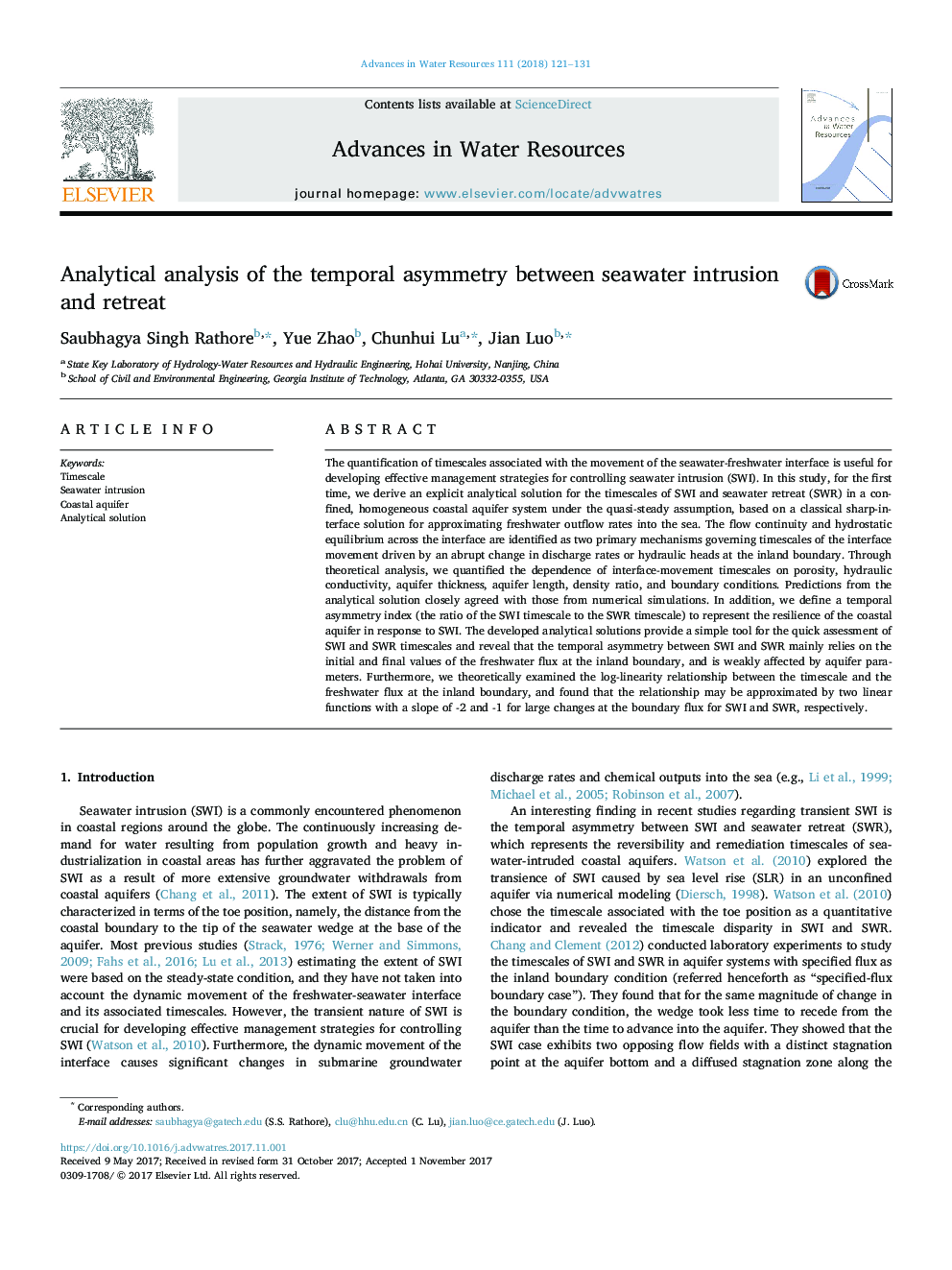| Article ID | Journal | Published Year | Pages | File Type |
|---|---|---|---|---|
| 8883402 | Advances in Water Resources | 2018 | 11 Pages |
Abstract
The quantification of timescales associated with the movement of the seawater-freshwater interface is useful for developing effective management strategies for controlling seawater intrusion (SWI). In this study, for the first time, we derive an explicit analytical solution for the timescales of SWI and seawater retreat (SWR) in a confined, homogeneous coastal aquifer system under the quasi-steady assumption, based on a classical sharp-interface solution for approximating freshwater outflow rates into the sea. The flow continuity and hydrostatic equilibrium across the interface are identified as two primary mechanisms governing timescales of the interface movement driven by an abrupt change in discharge rates or hydraulic heads at the inland boundary. Through theoretical analysis, we quantified the dependence of interface-movement timescales on porosity, hydraulic conductivity, aquifer thickness, aquifer length, density ratio, and boundary conditions. Predictions from the analytical solution closely agreed with those from numerical simulations. In addition, we define a temporal asymmetry index (the ratio of the SWI timescale to the SWR timescale) to represent the resilience of the coastal aquifer in response to SWI. The developed analytical solutions provide a simple tool for the quick assessment of SWI and SWR timescales and reveal that the temporal asymmetry between SWI and SWR mainly relies on the initial and final values of the freshwater flux at the inland boundary, and is weakly affected by aquifer parameters. Furthermore, we theoretically examined the log-linearity relationship between the timescale and the freshwater flux at the inland boundary, and found that the relationship may be approximated by two linear functions with a slope of -2 and -1 for large changes at the boundary flux for SWI and SWR, respectively.
Related Topics
Physical Sciences and Engineering
Earth and Planetary Sciences
Earth-Surface Processes
Authors
Saubhagya Singh Rathore, Yue Zhao, Chunhui Lu, Jian Luo,
